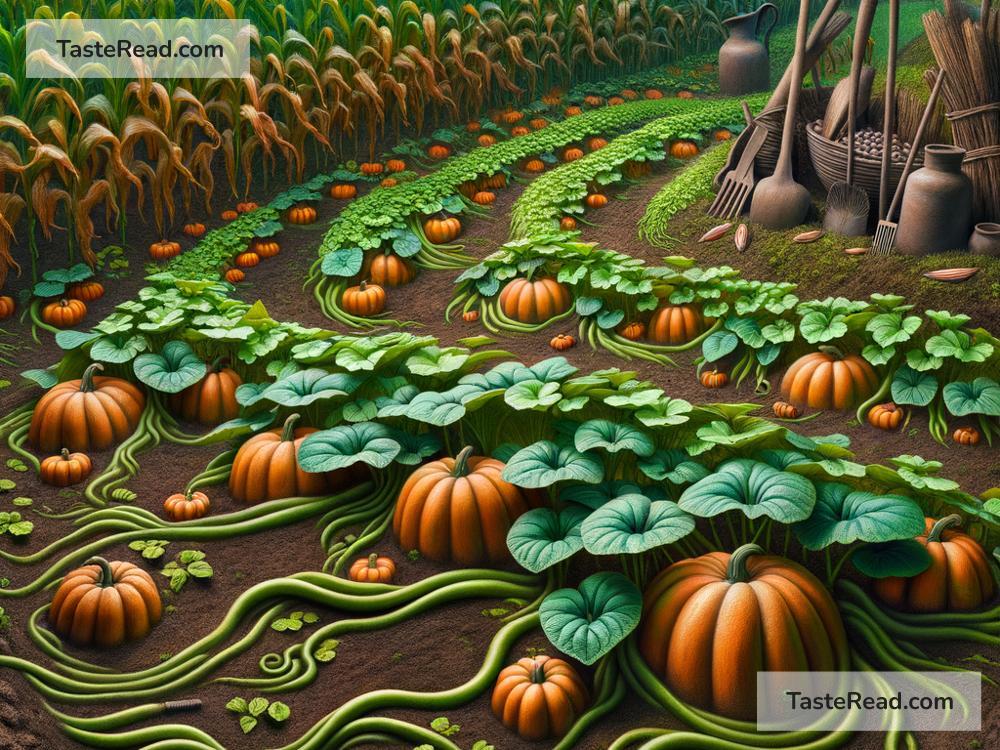The Historical Significance of Pumpkins in Native American Agriculture
Pumpkins are a popular symbol of fall. We see them everywhere during Halloween and Thanksgiving, used as decorations or in recipes like pumpkin pie. But did you know pumpkins have a long and significant history in Native American agriculture? For thousands of years, pumpkins were an important crop for Native American peoples, providing nourishment, tools, and cultural significance.
Early Origins of Pumpkins
Pumpkins are believed to have originated in Central America around 7,500 years ago. Archeological evidence shows that ancient peoples grew wild varieties of squash and pumpkin long before maize (corn) became a staple crop. They were among the “Three Sisters,” a trio of crops—corn, beans, and squash—that were grown together using an ingenious planting system.
Native Americans discovered the pumpkin’s many benefits early on. Its thick outer skin made it easy to store for long periods, helping families survive harsh winters or times when food was scarce. Pumpkins grew well in a variety of climates, making them reliable crops even in challenging environments.
Pumpkins and the “Three Sisters” Farming Method
One of the greatest contributions of Native American agriculture was the “Three Sisters” farming technique. In this approach, corn, beans, and squash are grown together to help each other thrive. Corn provides tall stalks for beans to climb, beans return nitrogen to the soil to improve plant growth, and squash with its large leaves shades the ground to keep moisture in and prevent weeds. Pumpkins, being a type of squash, played a key role in this system.
This sustainable farming practice allowed Native Americans to produce nutrient-rich food in an environmentally friendly way. Pumpkins were especially valuable in this trio because their vines and large leaves acted like natural mulch, protecting the crops and soil from erosion. The method was so effective that it is still admired today by agricultural experts as a model for ecosystem-friendly farming.
Food and Nutrition
Pumpkins were a main source of food for Native American peoples. They ate the flesh of the pumpkin and roasted or boiled the seeds for extra nutrition. Pumpkin seeds are high in protein, healthy fats, and essential vitamins, making them an excellent snack. Many Native Americans also dried pumpkin slices to create long-lasting food they could take with them while traveling.
Pumpkins were versatile in cooking. They were used in soups, stews, and even baked in the ashes of a fire to create a tasty meal. The flesh of the pumpkin provided carbohydrates, while the seeds added protein and essential nutrients to the diet. Together, these parts of the pumpkin helped sustain Native American communities.
Practical Uses Beyond Food
Pumpkins were not just used for eating. Native Americans found practical uses for every part of the plant. The tough pumpkin shells, once hollowed out, could be dried and used as containers for storing food, water, or seeds. In some cases, they even fashioned these shells into bowls and other tools.
The fibrous insides of pumpkins also had their uses. Native Americans would turn these fibers into ropes or mats. By using every part of the plant, they ensured there was no waste—a practice that aligned with their philosophy of living in harmony with nature.
Pumpkins in Ceremony and Culture
Beyond their practical uses, pumpkins held cultural and spiritual importance for many Native American tribes. Some tribes saw pumpkins and other squash as sacred gifts from the Earth. They were often incorporated into ceremonies and rituals to give thanks for the harvest. During fall festivals, pumpkins and other crops symbolized abundance and the cycle of life.
There are stories and traditions passed down through generations that emphasize the importance of pumpkins and their connection with the natural world. For Native Americans, pumpkins were not just food—they were a sign of their close relationship with the land.
Pumpkins and European Settlers
When European settlers arrived in America, they learned about pumpkins and their uses from Native Americans. Many settlers didn’t know how to farm effectively in this new land, and the Native Americans generously shared their knowledge of crops, including pumpkins.
Settlers adapted Native American pumpkin recipes and techniques to suit their tastes. Over time, pumpkins became a beloved ingredient in American cooking, especially for traditions like Thanksgiving. This is why pumpkin pie is still an iconic dish during the holiday season.
The Legacy of Pumpkins
Today, pumpkins remain an important part of American culture, especially during the fall. But their history goes far beyond jack-o’-lanterns and pie. For Native Americans, pumpkins were a key part of survival, a gift from the Earth, and a symbol of harmony with nature.
By understanding the historical significance of pumpkins in Native American agriculture, we can appreciate not only the food we eat but also the wisdom and sustainability practices of the people who farmed this land long before settlers arrived. Pumpkins remind us of the deep connection between people, plants, and the planet, and their history is truly something to celebrate.


